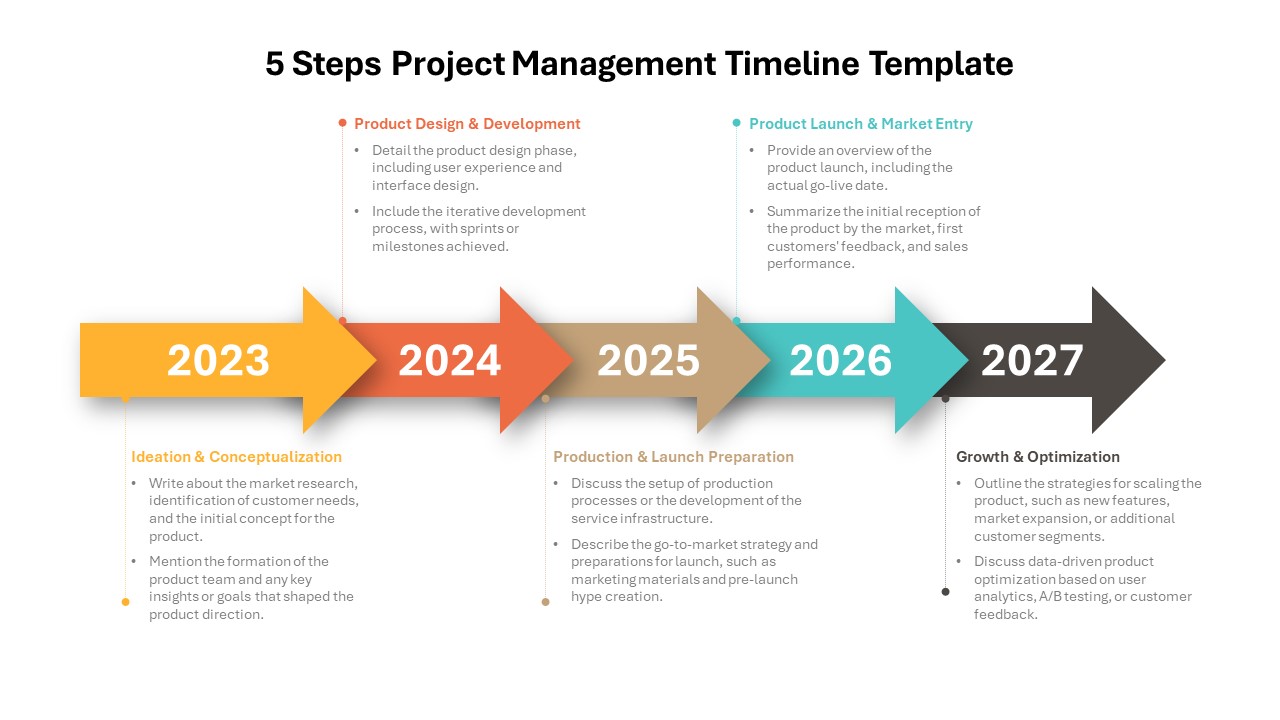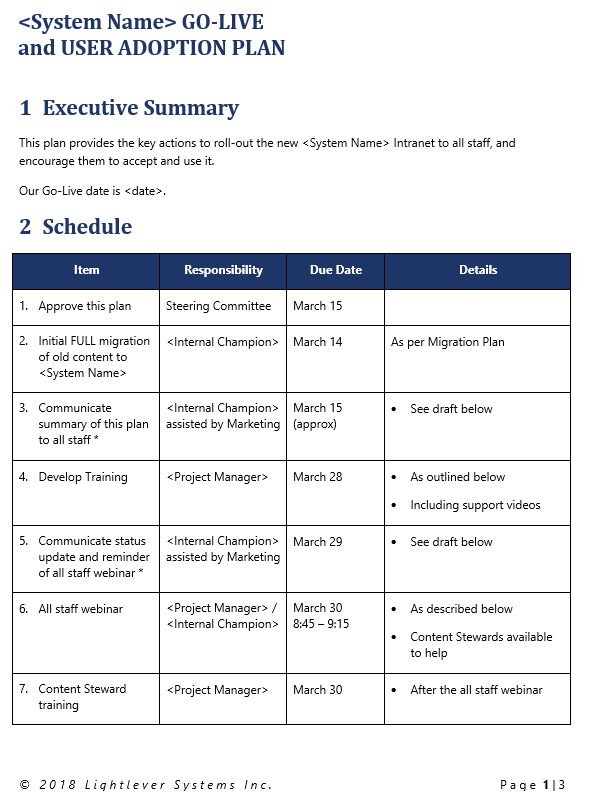The “Go Live” date in project management refers to the scheduled time when a project, product, or system is fully implemented and becomes operational for users.
In project management, setting a Go Live Date is essential. It represents the transition from planning to execution. This date is critical for the project’s success. Teams work hard to ensure everything is ready by this date. It’s a milestone that requires careful preparation and coordination.
Understanding the Go Live Date helps in managing expectations. It also aids in aligning team efforts toward a common goal. In this blog post, we will explore the significance of the Go Live Date. We will also discuss how to prepare for it effectively. This knowledge will ensure your project runs smoothly and meets its objectives.
Introduction To Go Live Date
The Go Live Date is a critical milestone in any project. It marks the moment when a project becomes operational. Understanding this concept is crucial for successful project management. Below, we delve into its definition and importance.
Definition
The Go Live Date is the scheduled date when a project or system goes into full operation. This date is set during the planning phase. It signifies that the system is ready for use by its intended users. All development and testing activities should be completed by this time. The Go Live Date is often the culmination of months, or even years, of hard work.
Importance In Project Management
The Go Live Date holds significant importance in project management. It serves as the final checkpoint before a project becomes active. Here are some reasons why it is important:
- Accountability: It holds the team accountable for delivering on time.
- Planning: It helps in planning the project phases and resources.
- Stakeholder Confidence: It instills confidence in stakeholders that the project is on track.
- Budget Management: It aids in managing the project budget effectively.
Missing the Go Live Date can have serious consequences. It can lead to project delays, increased costs, and loss of stakeholder trust. Therefore, it is essential to plan carefully and ensure that all tasks are completed on schedule.
In summary, the Go Live Date is a pivotal moment in the life of a project. It marks the transition from planning and development to operational status. Proper planning and execution are vital to ensure a smooth Go Live process.

Credit: www.slidekit.com
Planning For Go Live
Planning for a Go Live date in project management is crucial. It marks the moment when a project is ready to be operational. Proper planning ensures a smooth transition and minimizes disruptions. This section covers the essentials of planning for Go Live.
Setting The Date
Setting the Go Live date is a significant step. It involves choosing a date that aligns with project milestones and stakeholder availability.
Here are some steps to set the date:
- Review the project timeline.
- Consult with stakeholders.
- Consider external factors like holidays.
Factors To Consider
Several factors influence the Go Live date. These factors ensure the chosen date is realistic and achievable.
Consider these elements:
| Factor | Description |
|---|---|
| Project Readiness | Ensure all tasks are complete. |
| Team Availability | Confirm the team can support the launch. |
| Stakeholder Approval | Get the necessary approvals. |
| Risk Assessment | Identify potential risks and mitigations. |
Effective planning for Go Live ensures a successful project launch. By setting the date carefully and considering key factors, you can achieve a smooth transition.
Preparation Steps
The Go Live Date is crucial in project management. Adequate preparation ensures a smooth transition. This section highlights the necessary steps to be ready for the Go Live Date.
Team Readiness
Ensuring team readiness is vital. Everyone must know their roles and responsibilities. Conduct training sessions to address any knowledge gaps. Clear communication channels are crucial.
- Set clear goals and expectations.
- Provide comprehensive training.
- Establish clear communication channels.
Regular check-ins help to track progress. Address any issues promptly. This minimizes last-minute surprises.
System Testing
System testing ensures all systems function correctly. Rigorous testing identifies any potential issues.
- Perform unit testing.
- Conduct integration testing.
- Carry out user acceptance testing (UAT).
Create a testing schedule. Stick to it. Testing phases include:
| Test Type | Description |
|---|---|
| Unit Testing | Tests individual components. |
| Integration Testing | Ensures components work together. |
| UAT | Validates the system meets user needs. |
Document all test results. Address failures immediately. Retest until the system is stable.
Risk Management
The Go Live Date in project management is pivotal. It marks the moment a project moves from planning to operational. Effective risk management is crucial to ensure this transition is smooth. Identifying potential risks and creating strategies to mitigate them is essential. Let’s dive into the key aspects of risk management for the Go Live Date.
Identifying Risks
Identifying risks early can save time and resources. Start by analyzing past projects. What issues did they face? Then, brainstorm potential risks with your team. Common risks include technical failures, insufficient training, and resource shortages. Document these risks in a risk register.
Here’s a simple table to categorize risks:
| Risk | Impact | Likelihood |
|---|---|---|
| Technical Failure | High | Medium |
| Insufficient Training | Medium | High |
| Resource Shortages | High | Low |
Mitigation Strategies
Once risks are identified, create mitigation strategies. These strategies should reduce the impact or likelihood of each risk. For technical failures, ensure thorough testing before the Go Live Date. Conduct training sessions to address insufficient training. To avoid resource shortages, have backup resources available.
Consider the following strategies:
- Regular system checks and maintenance
- Comprehensive training programs
- Resource management plans
By implementing these strategies, you can minimize disruptions and ensure a successful Go Live Date.
Communication Plan
The Go Live Date in project management marks a critical milestone. A robust communication plan is essential for success. It ensures that everyone involved understands their roles and responsibilities.
Stakeholder Communication
Effective communication with stakeholders is vital. Stakeholders include clients, sponsors, and key partners. They need timely updates and clear information.
- Schedule regular meetings to discuss progress.
- Provide detailed reports on project status.
- Highlight any potential risks or issues.
- Ensure transparency through all communications.
These steps help maintain trust and ensure alignment with project goals.
Internal Team Updates
Keeping the internal team informed is equally important. Clear and regular updates enhance team coordination and efficiency.
- Conduct daily stand-up meetings.
- Share progress updates through emails or internal platforms.
- Address any team concerns promptly.
- Encourage open communication among team members.
This approach ensures that everyone stays on the same page and can address any issues quickly.

Credit: www.maksegroup.com
Training And Support
The Go Live Date is a critical milestone in project management. It marks the official launch of the project. Ensuring proper training and support is crucial for a smooth transition. Effective user training and comprehensive support resources can make or break the success of your project.
User Training
User training prepares end-users to use the new system or process. It helps them understand its functionalities and benefits. Here are some key points to consider:
- Identify key users: Focus on training those who will use the system most.
- Create training materials: Develop easy-to-understand guides and tutorials.
- Schedule training sessions: Organize sessions before the Go Live Date.
- Interactive methods: Use hands-on training and simulations.
- Feedback mechanism: Allow users to provide feedback and ask questions.
Support Resources
Support resources are essential for addressing issues that arise post Go Live. They ensure users have the help they need to navigate the new system. Key support resources include:
- Help Desk: A dedicated team to answer user queries.
- Knowledge Base: A repository of FAQs, articles, and guides.
- Online Forums: Platforms for users to share experiences and solutions.
- Live Chat: Instant support through chat services.
- Regular Updates: Keep users informed about changes and improvements.
Providing robust training and support ensures a successful transition and enhances user confidence. Make these steps a priority to achieve project success.
Executing The Go Live
The Go Live date is a crucial milestone in project management. It marks the day when the project becomes operational. This phase is critical. It needs meticulous planning and execution to ensure success. Let’s explore the steps involved in executing the Go Live.
Launch Day Activities
Launch day is filled with key activities. Each is essential for a smooth transition. Here are some common tasks:
- Final System Checks: Ensure all systems are functioning as expected.
- Data Migration: Transfer data from old systems to the new one.
- Communication: Inform all stakeholders about the Go Live.
- Training: Provide last-minute training to the team.
- Backup Plans: Have contingency plans ready for any issues.
Monitoring And Support
Once the system goes live, continuous monitoring is vital. This helps in identifying and resolving issues quickly. Here are some steps to ensure effective monitoring and support:
- Real-Time Monitoring: Track system performance in real time.
- Support Teams: Have dedicated support teams available.
- Feedback Channels: Set up channels for user feedback.
- Regular Updates: Provide regular updates to stakeholders.
Effective monitoring ensures the system remains stable. It helps in identifying potential issues early. This reduces downtime and enhances user satisfaction.

Credit: lightlever.ca
Post Go Live Review
After the Go Live date in project management, a Post Go Live Review is crucial. This review helps in understanding the success and areas for improvement. It includes assessing the project’s performance and documenting lessons learned.
Performance Assessment
The Performance Assessment stage focuses on evaluating the project’s outcomes. Did the project meet the objectives? Were the goals achieved within the planned time and budget?
- Compare actual performance with planned performance.
- Analyze any variances and their causes.
- Review the project’s impact on business operations.
Lessons Learned
Documenting Lessons Learned is essential for future projects. It involves reflecting on what went well and what didn’t. This helps in avoiding similar issues in the future.
- Identify key successes and reasons behind them.
- Note down any challenges faced during the project.
- Discuss solutions or workarounds applied to overcome challenges.
Recording these insights ensures continuous improvement. It also helps in building a repository of knowledge for the organization.
Frequently Asked Questions
What Is A Go Live Date?
A Go Live Date is the scheduled date when a project or system becomes operational. It’s the day users start using the new system.
Why Is Go Live Date Important?
The Go Live Date is crucial for project planning and execution. It signifies the transition from planning to actual use.
How To Determine A Go Live Date?
Determining a Go Live Date involves assessing project readiness, resource availability, and stakeholder consensus. Planning is key.
What Happens On Go Live Date?
On Go Live Date, the project transitions from development to operational use. Users start utilizing the new system.
Conclusion
A Go Live Date is crucial in project management. It marks the official launch. Teams must prepare well to ensure success. Proper planning and communication are key. This date impacts the project’s outcome. Stay organized and focused. Understand the importance of this milestone.
Aim for a smooth transition. Keep stakeholders informed. Learn from each Go Live experience. This helps improve future projects. A well-managed Go Live Date leads to project success.
Related posts:
- Best Practices for Project Managing 3rd Party Developers: Proven Tips
- What are the Key Elements of Successful Project Management: Essential Guide
- Who Should Project Manager Involve in Integration Process: Key Stakeholders
- Clinical Start-Up Check List of Documents for Project Managers: Essential Guide

